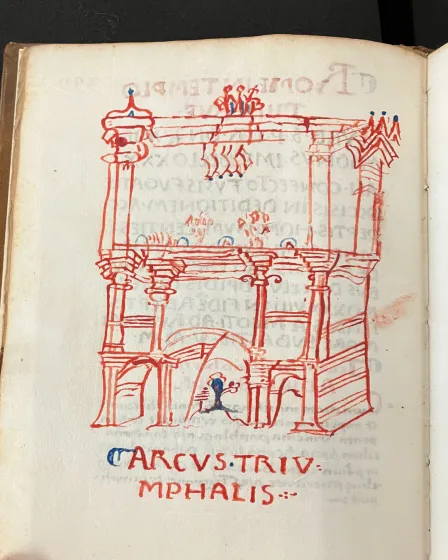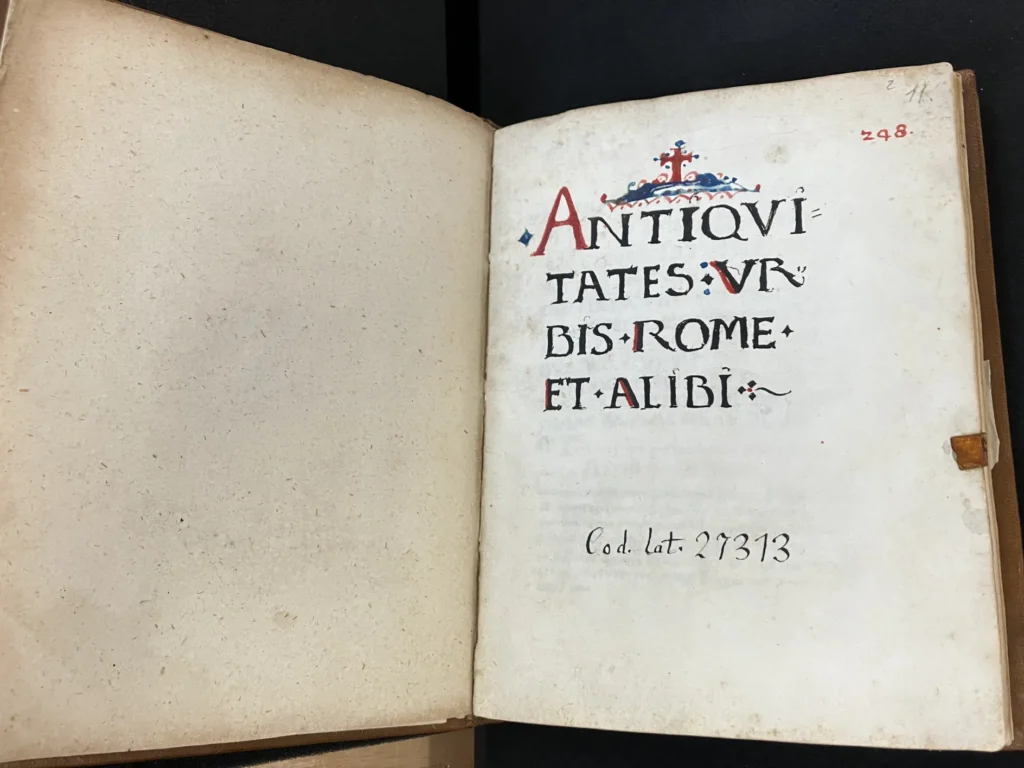Thanks to the support of a Penelope Biggs Travel Award and the Department of Classics, Lecturer Justin Meyer traveled to Munich and Augsburg this spring to conduct research at the Bavarian State Library and the Staats- und Stadtbibliothek Augsburg. Despite an illness that interrupted the final week of his trip, Meyer reports a highly productive research experience centered on a remarkable 15th-century manuscript.

The focus of Meyer’s research was Hartmann Schedel’s Liber Epigraphicus, a manuscript Schedel titled Antiquitates Urbis Rome et Alibi. The manuscript is a rich compilation of hand-drawn illustrations and Latin inscriptions, documenting one of the earliest known efforts by German humanists to study and preserve Roman material culture. Among its contents are sketches of Roman monuments—such as a triumphal arch Meyer identifies as likely the Arch of Constantine—and numerous transcribed inscriptions, including that of P. Platius Pulcher (CIL XIV 3607).
Schedel’s interest in inscriptions mirrors a broader 15th-century humanist trend, and his work later caught the attention of Theodor Mommsen, the founder of the Corpus Inscriptionum Latinarum (CIL). Mommsen used the Liber Epigraphicus extensively and even signed his name in the volume, a mark of scholarly engagement that will be included in an upcoming digitization.
